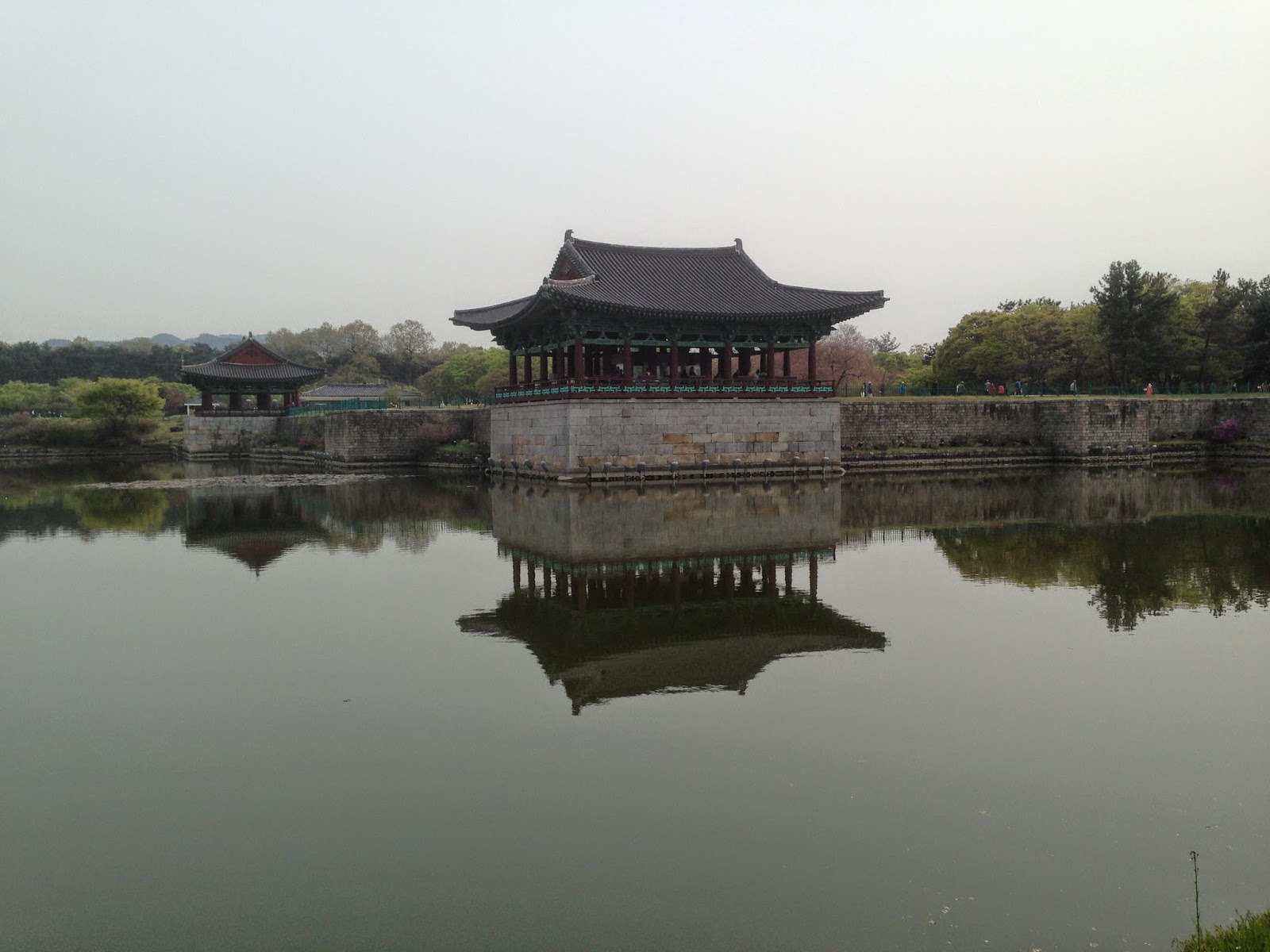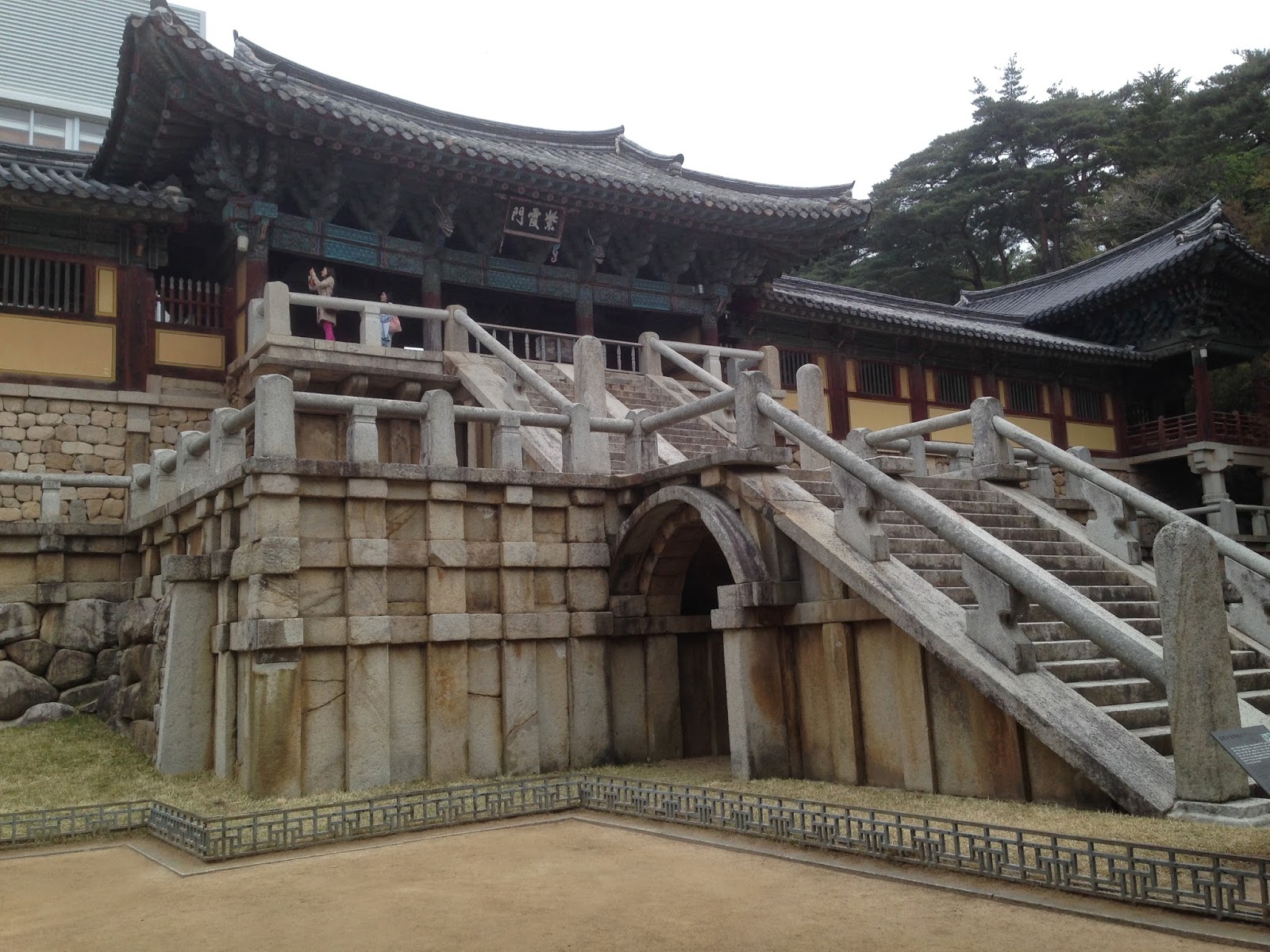Greetings: Been a while, but we are back with some photos from a few trips taken over the past few months. First up, the city of Gyeongju, which was the capital of the Silla Kingdom (57 BCE-935 AD). Silla unified two-thirds of the Korean Peninsula for about 300 years
from the 600s to the 900s, a period which is thought to be one of
Korea's greatest eras of cultural development. As the capital, Gyeongju represented the finest Silla could offer during those glory years. Today, it is one of Korea's top tourist sites and contains the remnants of many old tombs, temples, palaces, pagodas, and other cultural sites that once represented the best of the Silla Kingdom. Unfortunately, "remnants" is an all-to-appropriate description for many of the sites as some of the finest examples of Silla's era were destroyed by Mongol (13th century) and Japanese (16th century) invaders, then neglected for many years until they were reconstructed in modern times. Still, Gyeongju has a great deal to offer for anyone interested in Korean history. Plus, it was a nice couple days spent away from the hustle and bustle of Seoul.
Royal Tombs. They were lots of these scattered about the city and its surroundings, but this particular site is on of the more important. The five tombs on these grounds are believed to include the founder of the Silla Kingdom, King Baehyeokgeose, his queen Aryeong, and three of the next four kings of Silla.
In the same park is the
Sungdeokjong Shrine, which is dedicated to Baehyeokgeose. First built in the 1400s, it was burned down by Japanese invaders in 1592 and reconstructed in the 1700s.
Tumuli Park. The "Heavenly Horse Tomb," named for one of the artifacts found inside it. The tomb was was excavated in the 1970s and is now open to the public. Inside are artifacts (and facsimiles) found from this tomb and the other 22 tombs in the park.
Cheomseongdae. A stone observatory built between 632 and 646 and believed to be the oldest in Asia.
Anapji Pond.
The National Museum. An impressive collection of artifacts.
 |
| This bell was created in 771. |
Bolguksa Temple. One of Korea's finest temples. First built in 528 (and enlarged in 751), it was unfortunately another victim of Japanese invaders, being destroyed in 1593. It languished for a long time, but was restored in the 1970s by the Park Chung-hee government. Even for a reconstruction, it was impressive and surely was once a beautiful and magnificent structure.
 |
| One of two Pagodas which survived the Japanese. |
Seokguram Grotto. Up in the mountains above Bolguksa temple is a large seated image of the Sakyamuni Buddha, which was constructed out of huge blocks of granite (that were hauled great distances) in the 8th century. Unfortunately, the Buddha is encased in a large shiny glass structure and access is rather limited. This photo was the best we could do.
That's it for Gyeongju. Next up, Busan.























No comments:
Post a Comment